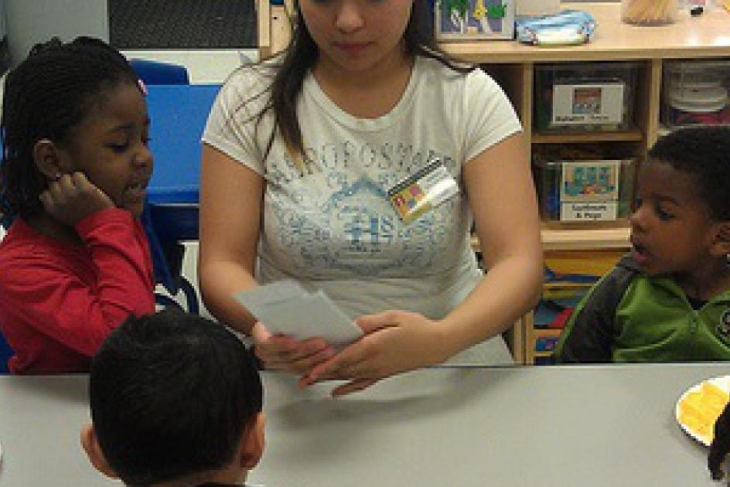In a National Review piece last month, Mike Petrilli raised the important issue of how schools can build on the existing social capital in low-income neighborhoods. Yet he was unduly skeptical about the social-capital-building potential of a “typical Head Start center.” In fact, building social capital is the exact purpose that Head Start programs are designed to fill, and many of them do an outstanding job of it. In this regard, they are models for the public school system.
Head Start programs are expected to partner with communities and feature dedicated capacity and strategies for engagement that build on existing assets and networks. Their functions often take these shapes:
- A social services hub. Many of the children in struggling neighborhoods will enter with a wide range of needs. Head Start programs address them by partnering with existing, trusted service providers that both serve students directly and educate teachers and school leaders about common warning signs. If schools did the same—instead of just trying to provide those services on their own—they could better attend to their students’ comprehensive needs.
- A family support hub. Parents in low-income communities often lack social capital, and research shows that building it up through social assistance such as housing subsidies, job training, and adult education can have a profound impact on children. Many Head Start programs directly provide some of these services and help parents network with one another, which also creates a greater sense of community for those who feel isolated.
- Partnering with parents. Head Start programs seek open communication and transparency with parents in order to help them advocate for their children. This systematic engagement—a hallmark of K–12 schools in wealthier neighborhoods, but rarely seen in low-income communities—is meant to treat the school and parents as equal partners.
There is definitely room for improvement in the quality and consistency of Head Start delivery, including how programs are held accountable for their work in strengthening neighborhoods. Still, the best Head Start programs offer valuable lessons that schools can learn from. For example, Educare Atlanta (a Head Start program operated by Sheltering Arms) partners with the Center for Working Families to connect parents with a job training program. This multigenerational approach—supporting the learning and development of both parents and children—has been successful in moving families out of poverty.
Early learning programs like Head Start can have an outsized impact by working with the lowest-resourced parents early in their children’s educational progression. But they surely can’t turn neighborhoods around on their own—especially when they are transitioning children into school systems that may not be designed to sustain their efforts. Although it could be a key partner for K–12 schools as they attempt to expand social capital for families and communities, few districts look to Head Start's outreach practices as a model. That’s a shame, because they can help leverage the power of schools to transform individual resources into a support system for student success.
Elliot Regenstein is a senior vice president at the Ounce of Prevention Fund.

